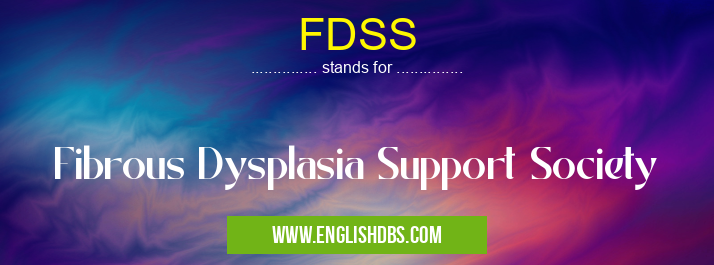What does FDSS mean in SOCIETIES
FDSS stands for Fibrous Dysplasia Support Society. The Fibrous Dysplasia Support Society (FDSS) is a nonprofit organization dedicated to providing support and resources to individuals and families affected by fibrous dysplasia, a rare genetic bone disorder.

FDSS meaning in Societies in Academic & Science
FDSS mostly used in an acronym Societies in Category Academic & Science that means Fibrous Dysplasia Support Society
Shorthand: FDSS,
Full Form: Fibrous Dysplasia Support Society
For more information of "Fibrous Dysplasia Support Society", see the section below.
Mission of FDSS
The mission of the FDSS is to:
- Provide emotional support and information to individuals and families affected by fibrous dysplasia.
- Promote research on fibrous dysplasia and its treatment.
- Advocate for the rights of individuals with fibrous dysplasia.
Services Provided by FDSS
The FDSS provides a range of services to its members, including:
- Online support groups and discussion boards
- Educational materials about fibrous dysplasia
- A directory of medical professionals who specialize in treating fibrous dysplasia
- Financial assistance for medical expenses
- Advocacy for legislative and policy changes that benefit individuals with fibrous dysplasia
How to Join FDSS
Individuals and families affected by fibrous dysplasia can join the FDSS by visiting their website or contacting their office. There is a membership fee, but financial assistance is available for those who need it.
Essential Questions and Answers on Fibrous Dysplasia Support Society in "SCIENCE»SOCIETIES"
What is Fibrous Dysplasia?
Fibrous Dysplasia is a rare, non-cancerous bone condition that causes the normal bone tissue to be replaced by fibrous, scar-like tissue. This can lead to weakened bones, deformities, and pain.
What are the symptoms of Fibrous Dysplasia?
Symptoms can vary depending on the location and severity of the condition. Common symptoms include bone pain, swelling, deformities, and fractures. In some cases, it can also affect the function of nearby organs or nerves.
What causes Fibrous Dysplasia?
The exact cause of Fibrous Dysplasia is unknown, but it is believed to be caused by a genetic mutation in a gene called GNAS1. This mutation disrupts the normal development and growth of bone tissue.
How is Fibrous Dysplasia diagnosed?
Diagnosis typically involves a combination of physical examination, medical history, and imaging tests such as X-rays, CT scans, or MRIs. Blood tests may also be used to rule out other conditions.
Is there a cure for Fibrous Dysplasia?
Currently, there is no cure for Fibrous Dysplasia. However, treatment options are available to manage the symptoms and prevent complications.
What are the treatment options for Fibrous Dysplasia?
Treatment options vary depending on the severity of the condition. Common treatments include pain medication, physical therapy, bracing, and in some cases, surgery. Medication can help manage pain and reduce inflammation, while physical therapy can help strengthen muscles and improve mobility. Surgery may be necessary to correct deformities, repair fractures, or remove affected bone tissue.
What is the prognosis for Fibrous Dysplasia?
The prognosis for Fibrous Dysplasia varies depending on the severity of the condition. Most people with mild Fibrous Dysplasia can live normal, active lives with minimal symptoms. However, those with more severe forms may experience significant pain, deformities, and disability.
Final Words: The FDSS is a valuable resource for individuals and families affected by fibrous dysplasia. The organization provides support, information, and advocacy for those living with this rare and challenging condition.
